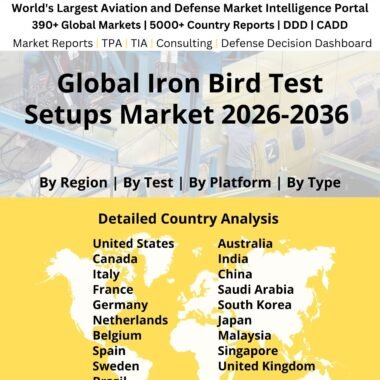Description
VSAT Market
Frequently Asked Questions of Global VSAT Market
VSAT stands for Very Small Aperture Terminal, which is a type of satellite communication system that uses small dish antennas to transmit and receive data via satellites. VSAT technology is widely used for various applications, including internet connectivity, voice communication, videoconferencing, and remote sensing. VSAT systems consist of a hub station and multiple remote terminals. The hub station acts as the central control and communication point, while the remote terminals are located at customer sites or remote locations.
VSAT systems use small dish antennas, typically ranging from 0.75 meters to 2.4 meters in diameter, depending on the required signal strength and geographic location. These antennas are designed to transmit and receive signals to and from the satellite. VSAT systems rely on geostationary satellites, which are positioned at fixed points above the Earth’s surface. The dish antennas communicate with these satellites, which relay the signals to and from the hub station. VSAT systems support two-way communication, allowing data to be transmitted in both directions—uplink (from remote terminals to the satellite) and downlink (from the satellite to the remote terminals). This enables interactive communication and real-time data exchange.
VSAT systems offer a range of bandwidth options, from a few kilobits per second (Kbps) to several megabits per second (Mbps) or more, depending on the specific requirements. Higher bandwidth allows for faster data transfer rates and supports applications such as video streaming and large file transfers. VSAT networks can be configured in various topologies, including star, mesh, and hybrid. In a star topology, all remote terminals communicate directly with the central hub station. In a mesh topology, remote terminals can communicate with each other directly, forming a network of interconnected VSATs.
VSAT communication finds applications in several industries and sectors. It is commonly used for providing internet connectivity in remote areas where traditional wired infrastructure is unavailable or impractical. VSATs are also utilized in maritime and aviation industries, disaster recovery operations, military communications, and connecting remote branches of organizations. VSAT systems offer several advantages, including global coverage, rapid deployment, scalability, and the ability to provide connectivity in remote and underserved areas. They are also resilient to terrestrial network failures and can operate in harsh environmental conditions. While VSAT communication is versatile, it has some limitations. The main challenges include latency (due to the signal’s round-trip time to and from the satellite), susceptibility to weather conditions (such as rain fade, where heavy rainfall can attenuate the signal), and cost (initial setup and ongoing service costs).
Major factors driving VSAT Market Growth
The demand for reliable and high-speed connectivity has been growing across various sectors and industries. VSAT systems provide a cost-effective solution for extending communication services to remote and underserved areas where terrestrial infrastructure is limited or nonexistent. The demand for connectivity in sectors such as telecommunications, maritime, energy, government, and retail has contributed to the growth of the VSAT market.
Trends Influencing the VSAT-Market Size
Technological advancements have enhanced the performance and capabilities of VSAT systems. High-throughput satellites (HTS) and advanced modulation schemes enable higher data transfer rates and improved efficiency, making VSAT a more viable option for bandwidth-intensive applications. Additionally, advancements in antenna technology, such as phased array antennas and electronically steerable antennas, offer greater flexibility and efficiency in signal transmission and reception.
VSAT-Market Forecast & Dynamics
The global VSAT market is highly competitive, with numerous service providers offering VSAT solutions and services. These providers offer a range of service packages, including bandwidth plans, equipment, network management, and customer support. Companies in the VSAT market often focus on specific industries or regions, providing tailored solutions to meet the unique requirements of their target markets. The market forecast encompasses a thorough market analysis and assessment of market size. The analysis comprises an evaluation of regional market size, factors driving growth, constraints, and potential opportunities. Furthermore, the regional analysis also includes an examination of the VSAT market size specific to each country.
VSAT Analysis for Recent Developments
Following the successful launch of the SATRIA-1 satellite, the Ministry of Communication and Informatics indicated that it is planning to develop infrastructure support in the form of Very Small Aperture Terminals (VSAT) at priority public facilities. VSAT serves as one of the ground segments that has become a signal-receiving station, allowing the internet to be used at the designated service locations. Furthermore, the ministry will conduct monitoring for the following six months through PT Satelit Nusantara Tiga (SNT) and Thales Alenia Space, so that the satellite can be seamlessly positioned in orbit. The Republic of Indonesia Satellite-1 (SATRIA-1) is designed to provide internet access in underserved, frontier, and remote (3T) areas, specifically in public buildings.
KVH has launched the One OpenNet plan, which allows vessels equipped with non-KVH antennas to access the communications network using any type of very small aperture terminal (VSAT). Previously, only vessels equipped with KVH gear could connect to the worldwide high-throughput (HTS) network provided by the Rhode Island-based communications company. A simple software update is required, but no hardware exchange is required for vessels to enjoy KVH’s VSAT coverage, 24/7 airtime, technical support, and value-added services. Most Intellian, Cobham Satcom, and other maritime VSAT terminals are compatible with the KVH One OpenNet program.
The global landscape of Very Small Aperture Terminal (VSAT) technology has seen significant advancements, reshaping the connectivity landscape across various industries. VSAT systems, known for their ability to provide satellite-based communication services, have evolved to meet the increasing demand for high-speed, reliable, and global connectivity. Advancements in VSAT technology include higher data transfer rates, improved modulation schemes, and enhanced spectral efficiency, contributing to more efficient and cost-effective communication solutions. These developments have particularly benefited remote and underserved areas, maritime communication, and mobile applications.
The integration of VSAT systems with high-throughput satellites and the adoption of frequency reuse technologies have increased the overall capacity and performance of satellite networks. This evolution supports the growing requirements of broadband internet, enterprise networks, and critical communication services. In 2023, VSAT systems play a vital role in sectors such as telecommunication, oil and gas, maritime, defense, and disaster response. The use of VSAT technology in these industries facilitates seamless communication, remote monitoring, and mission-critical data transfer. Collaborative efforts to standardize VSAT technologies and the deployment of innovative solutions, such as flat-panel antennas and software-defined networking, signify a commitment to advancing global connectivity through VSAT systems. Overall, the ongoing developments in VSAT technology in 2023 contribute to a more interconnected and digitally accessible world.





